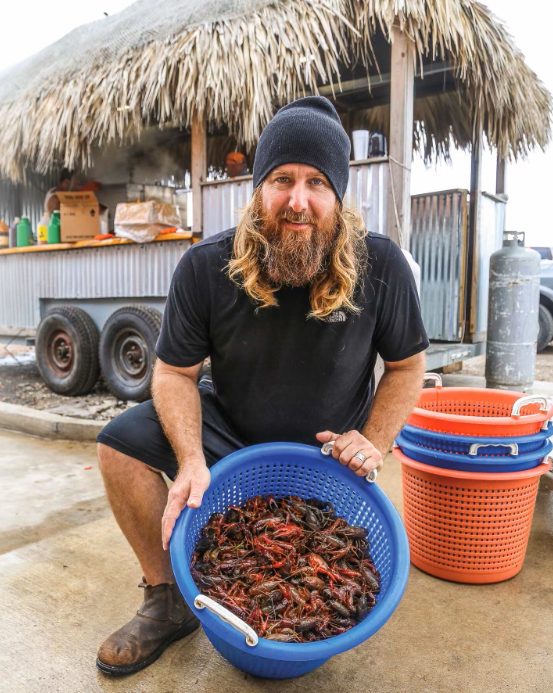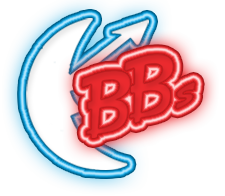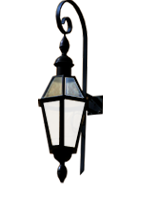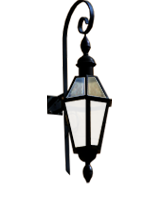What Can We Expect This Crawfish Season?

The crawfish season can be fickle and this year is no different! We always play by the season and our price, size and WHEN we start the crawfish season at BB’s Tex-Orleans, is always determined by our distributors and what and how much they can supply us location-wide (BB’s has ten locations to serve you in Houston, Texas and its’ surrounding areas)!
Here, Brooks Bassler, Founder and CEO of BB’s Tex-Orleans, sits down to talk with Jason Cogburn, the owner of Boyd’s Seafood, about the skinny on this year’s crawfish season and what we can expect. Here is an inside look at what will affect crawfish season in 2021 according to Jason:
Jason, can you tell us why the crawfish season is looking like it could start slow this year?
Sure, usually the year after a hurricane, the weather seems always to be messed up! That’s playing a role because we didn’t have one; we had three, which is not in our favor. Usually you have colder winters when that happens. Plus, with the strong winds, you kind of messed up some of your vegetation and the vegetation’s looking good in a lot of spots, but some of the reason why it’s late this year, is the help. A lot of these guys, visa workers are coming in late, some of it has to do with COVID but there’s a lot of guys, there’s a new Secretary of Labor and she’s a lot tougher than the Secretary of Labors they’ve had before. There’s a certain amount of square footage that these guys have to have for their men, and she’s coming in and making them redo and not approving some of them. Anyone that’s not approved with how much space they have for the proper living conditions, (not that these guys are not taking care of their guys well), it’s bureaucracy. If you’re not in line with some of this red tape, then they shut you down until you can completely comply. For example, maybe they only have space for 100 guys and have to redo for another 50 guys, which postpones things. With that postponement, you’re having guys not being able to bait their traps or get them out there. It becomes a big help issue because a lot of these guys are very dependent on these visa workers. It definitely falls in contingency of what they’re going to catch.
So the lack of not having visa agricultural workers which come from Mexico, Thailand, Vietnam, and some other parts of the world negatively affect the boiled crawfish business?
Absolutely! It’s kind of like the potato industry and a lot of other farming industries across the country. These guys have taken over. You know, with a lot of these jobs seemingly what we’re finding, more and more, is that Americans just don’t want these types of jobs. The reliability of the guys we rely on, I think is a very noble thing, leaving their families for six or eight months at a time to come over here, they have nowhere else to go. They come over here to work and to take the money back home to their families. They work their butt off! It’s hard to compete with the lifestyle they leave to come over here and have an opportunity to make some money. It’s hard to find guys around here as dedicated and dependable. That’s the main thing, is the dependability.
That’s amazing. God bless them. They are such a blessing to our industry and to getting solid, consistent Louisiana crawfish, on the tables in Houston, Texas. I love seeing that. I love that part of the industry. Can you briefly explain why typically the pricing always starts high in December to February? What is some basic math of running traps and why that price is so high early season?
Absolutely. I know that so many people have this notion these people are just price gouging the customers at first because they can get them and because it’s early crawfish season. When you break it all down and you do the math, it’s very simple. During the heart of the crawfish season these guys might run five to ten traps to get a sack. Sometimes they could even run less, which is, that’s a pretty good ratio, but right now they’re running 200-300 traps to get a sack. So when you break that down and start doing the math of what of the labor that you have, plus the manpower you have of running that many (and some guys use boats). You have to figure in the gas and the oil and the wear and tear on the boats. Then, you figure in the bait you have to bait each trap with, you know you’re coming out when you’re catching that sack of crawfish and you’re getting paid four bucks a pound. You’re getting 120, 130 dollars a sack. You’ve got 180 to 200 dollars invested in that sack. And so it really deters a lot of fishermen from fishing because they’re going backwards. And there’s a lot of guys just fishing because they know later on it’ll pay off and that’s what keeps them going. But the price isn’t so high because nobody’s trying to get them. It’s only because of what goes in it, it’s what they have invested in and what they’re doing. It’s not a price hike or anything like that.
300 traps of Louisiana crawfish to produce one sack?
Oh, there’s traps that go through 20 or 30 sacks that won’t have anything in them. Some traps will have one or two crawfish in them and you know, and you have to bait each trap. Then you have to change the bait out. So it’s very costly.
The early crawfish season, we always ask ourselves why are we in the crawfish business? Because it’s so challenging to be in this industry early crawfish season especially when you’re at the hands of mother nature.
That’s it. We’ve been doing this since mid-November. Last year, no problem at all. We had a very good year last year in December, last year we probably did about 250,000 pounds in the month of December.
This year we’re probably around the 30,000 pounds. That’s the difference it makes it one in year and that’s what you deal with when you deal with a live product, it’s going to be different every year.
Anybody in the live, Louisiana crawfish businesses is just a little crazy and kind of same thing I tell my guys all the time, restaurant folks are a little crazy. Same thing applies for the live, Louisiana crawfish business. It’s tough business, Jason. You mentioned earlier, you’re expecting a better-quality crawfish this year unlike the past few years?
Absolutely! A lot of people probably don’t remember this but the year before last the crawfish were late like this. Those crawfish didn’t come out of it because the catch wasn’t really great. A lot of the crawfish were able to mature and grow longer. We had a very good season of nice size crawfish. The downfall to that is that it didn’t start until late. Well, last year we started early and people started fishing hard. Because of the price of crawfish was so good the year before last, they thought they could replicate that last year, but the catch was a lot better, so it made the price fall faster. They fished their ponds really hard. Those crawfish never got to a point of maturity to where they got the size that we wanted them to get. I mean, very, very few days last year do we really run our grater, crawfish were too mixed up. And then it has to be a certain ratio for you to even turn your grater on. Last year the crawfish weren’t near as nice but they started fishing a lot earlier. This year, it’s more like the year before last where I think they’re going to come in late but they’re going to be a very good size.
Boyd’s Seafood and Jason are a big reason why BB’s Tex-Orleans can always get the best boiled live crawfish in Houston. Just hearing what he goes through to make that happen and all the curve balls that he has to hit to secure live crawfish, who knew it would be that incredibly challenging?! We hope this has given you, our amazing customers, a look into the start of our crawfish season and how sometimes the challenges of mother nature affect the start dates, the supply, the market price and the size of crawfish season.
1/18/2021








